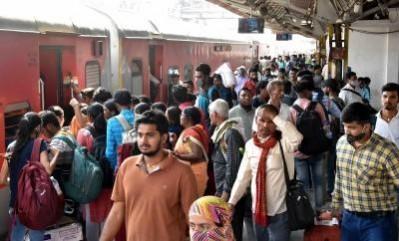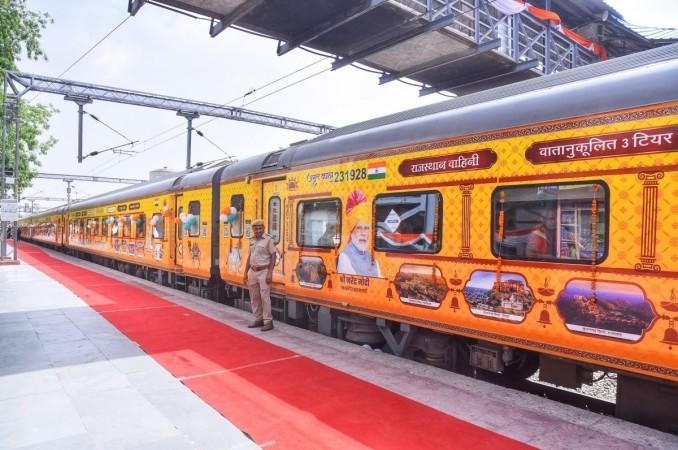
Indian Railways is embarking on a significant upgrade of its Passenger Reservation System (PRS) to enhance its capacity and efficiency. The current system, which can handle 25,000 tickets per minute, will be revamped to process over 100,000 tickets per minute.
This transformation is being executed through the Centre for Railway Information Systems (CRIS), marking a pivotal shift in the technological infrastructure of Indian Railways. The existing PRS, deployed in 2010, operates on Itanium servers and an open Virtual Memory System (VMS). However, with the rapid evolution of technology and changing passenger expectations, modernization has become imperative.
Union Railways Minister Ashwini Vaishnaw emphasized the necessity of this upgrade, stating that the current system requires a transition from legacy technology to the latest cloud technology-compliant systems. This transformation aims to address and fulfill the enhanced aspirations of passengers, who now demand more efficient and user-friendly services. The modernization of the PRS involves a complete overhaul of hardware, software, network equipment, security infrastructure, and functionalities. The new design is capable of accommodating additional features, ensuring that the system remains robust and adaptable to future technological advancements.
One of the significant changes accompanying this upgrade is the alteration in the Advance Reservation Period (ARP). Effective from November 1, 2024, the ARP for booking reserved tickets in trains has been reduced from 120 days to 60 days, excluding the date of the journey. This decision, as explained by Minister Vaishnaw, is based on booking trends and aims to reduce cancellations due to unforeseen events. The change in ARP is part of a continuous and ongoing exercise to optimize the reservation process based on passenger feedback and booking patterns.

Technological Advancements and Passenger Convenience
In addition to the PRS upgrade, Indian Railways has launched the RailOne App, a mobile application that allows passengers to book both reserved and unreserved tickets. This app effectively brings the PRS facility to the passenger's palm, making the booking process more accessible and convenient.
The introduction of the RailOne App is a testament to Indian Railways' commitment to leveraging technology to improve passenger services. The modernization of the PRS is not an isolated initiative. It is part of a broader strategy to enhance the overall infrastructure and services of Indian Railways.
A significant aspect of this strategy is the focus on increasing the number of non-air-conditioned (non-AC) coaches. Currently, non-AC coaches constitute approximately 70% of the total 82,200 coaches, translating to around 57,200 coaches. In a written response in the Lok Sabha, Minister Vaishnaw announced a dedicated manufacturing program to produce an additional 17,000 non-AC general and sleeper coaches over the next five years. This initiative aims to cater to the growing demand for affordable travel options, particularly among low and middle-income families.
The increase in non-AC coaches is a response to the significant rise in passenger traffic in general and unreserved categories. During the pandemic years of 2020-21 and 2021-22, 99 crore and 275 crore passengers traveled in the general class, respectively. This figure surged to 553 crore in 2022-23, 609 crore in 2023-24, and 651 crore in 2024-25. The daily average number of passenger trains also rose from 13,169 in 2019-20 to 13,940 in 2024-25, indicating an expansion in service to meet the increasing demand.
Commitment to Affordable Travel and Historical Context
Indian Railways' commitment to providing affordable travel options is further underscored by its pricing strategy. The fares for various trains and classes are determined with due consideration of the cost of service, value of service, passenger affordability, competition from other modes of transport, and socio-economic factors.
This approach ensures that Indian Railways remains accessible to a broad spectrum of passengers while maintaining financial sustainability. Historically, Indian Railways has been a vital component of India's transportation infrastructure, playing a crucial role in connecting different regions and facilitating economic growth.
The current modernization efforts are reminiscent of past initiatives aimed at enhancing the efficiency and capacity of the railway network. For instance, the introduction of computerized reservation systems in the late 1980s revolutionized the ticketing process, making it more efficient and reducing the scope for human error.
Similarly, the current upgrade of the PRS represents a significant leap forward in leveraging technology to improve passenger services. The modernization of the PRS is not just about increasing capacity but also about enhancing the overall passenger experience.
By upgrading to a cloud technology-compliant system, reducing the Advance Reservation Period, and increasing the number of non-AC coaches, Indian Railways is positioning itself to meet the evolving needs of passengers. The launch of the RailOne App further underscores the commitment to leveraging technology for improved passenger services. As Indian Railways continues to evolve, these initiatives are set to play a crucial role in shaping the future of rail travel in India, ensuring that it remains a vital and accessible mode of transportation for millions of passengers.
In conclusion, the ongoing modernization of the Passenger Reservation System by Indian Railways is a strategic initiative aimed at enhancing the efficiency, capacity, and user-friendliness of the ticketing process. These efforts are designed to meet the evolving needs of passengers and ensure that Indian Railways remains a vital and accessible mode of transportation for millions of passengers.


![Too drunk to walk? Karnataka to drop heavily intoxicated revellers home, sets up rest centres for New Year crowds [Watch] Too drunk to walk? Karnataka to drop heavily intoxicated revellers home, sets up rest centres for New Year crowds [Watch]](https://data1.ibtimes.co.in/en/full/826552/too-drunk-walk-karnataka-drop-heavily-intoxicated-revellers-home-sets-rest-centres-new-year.png?w=220&h=135&l=50&t=40)








![Too drunk to walk? Karnataka to drop heavily intoxicated revellers home, sets up rest centres for New Year crowds [Watch]](https://data1.ibtimes.co.in/en/full/826552/too-drunk-walk-karnataka-drop-heavily-intoxicated-revellers-home-sets-rest-centres-new-year.png?w=220&h=138)
![Too drunk to walk? Karnataka to drop heavily intoxicated revellers home, sets up rest centres for New Year crowds [Watch]](https://data1.ibtimes.co.in/en/full/826552/too-drunk-walk-karnataka-drop-heavily-intoxicated-revellers-home-sets-rest-centres-new-year.png?w=220&h=135)


